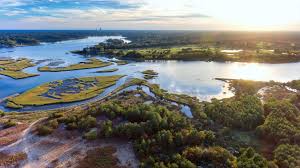Department of Watershed Management | Watershed District Development
The proposed project site
The developers involved in the project’s development plan had done extensive site work for their water and drainage systems before they had started construction. They kept the plans updated as the project moved forward. Among the best practices considered were rainwater harvesting to reduce water flow and increase storage and rainwater harvesting along the creek beds to reduce water run-off into the watershed. As for water management, an integrated stormwater management plan developed by the watershed department included watershed protection, conservation and storage, use and storage of water, flood mitigation, and development of protective or remedial measures for stormwater in low-lying areas and stormwater retention.
Regarding the land use and integrated stormwater management plans, the developers say they went through all of the appropriate permitting and development requirements, but the watershed department had concerns.
“Ultimately, the planning and development staff and their consultants recommended to the county’s planning commission that our plan was not integrated,” Scott says.
“Therefore, we notified them we were not ready to proceed at that time and would need to submit a new plan in order to obtain the necessary environmental permits and approval.”
From the beginning of the development plan process through the end of the project, Scott and the developers submitted multiple times to the watershed department planning documents and informational files and met with the department’s representatives to discuss the project and the concerns they had.
Their plan had been integrated, complete, and approved. The developers had worked closely with local, state and federal water officials and with development staff to address the impacts of development in the watershed.
They had installed stormwater retention ponds. Their planned urban watershed design addressed water loss into the watershed. They had integrated protection along the river corridor. Their development plan had survived the county’s rigorous review.
Then there were the floods.
These plans and progress were considered in developing the wetlands and rainwater features that would fill the watershed ponds. The plan was then integrated to develop the stormwater management plans that would further address stormwater in the watershed and in the newly developed areas.
Scott and the developers assert they complied with the terms of their permit, which required the development to “mitigate, manage and control development,” which included “the mitigation of stormwater runoff to the watershed” to address the impact of development on the watershed.
The watershed department, however, contends the developers had implemented the stormwater management plans.
Under the project’s proposal, 1.65 acres in the watershed would have been redeveloped for agriculture, 0.2 acres for stormwater, 0.5 acres in mixed-use development, 1.6 acres would have been integrated development with future development and 1.6 acres of wildlife habitat.
The watershed department says the development plan was adopted to meet the county’s environmental guidelines for development in the watershed.
In the watershed development plan, the development is to be maintained under a watershed management plan approved by the department.
Even after the watershed department approved the plan and the developers were ready to build, the project stalled. There were no plans for the subdivision.
Even after the watershed department approved the development, Scott says they were never given a reason as to why they couldn’t move forward.
While the developers were at the watershed department meetings, representatives from the business district were also at those meetings to explain their needs and bring concerns to the table.
The land that was to be used for mixed-use development was land used for agriculture.
These landowners are responsible for the preservation of the watershed and protecting it from development.




